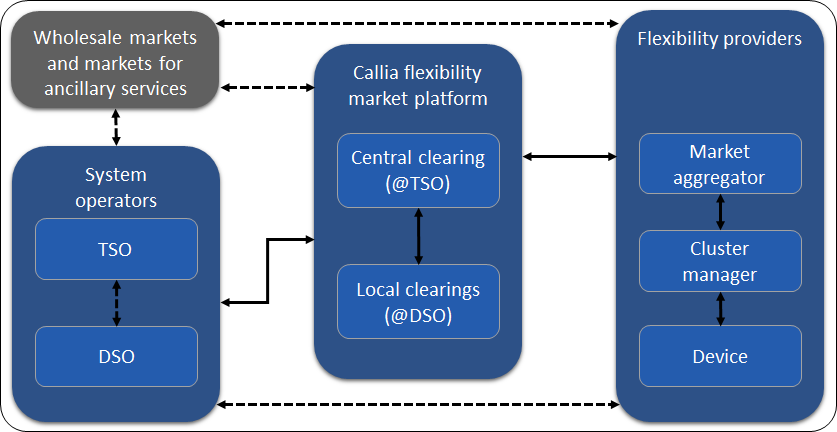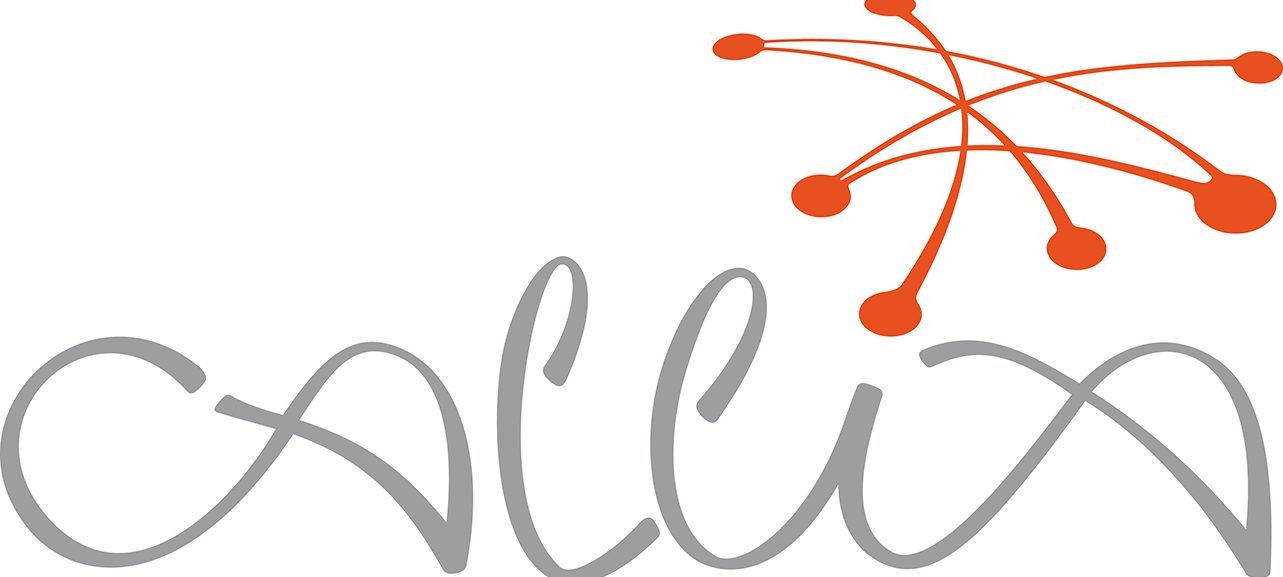Callia in a nutshell
CALLIA explores inter- and intra DSO cooperation through interacting local market clearing algorithms for deploying more flexibility at all voltage levels. This mechanism considers TSO system-level markets, thereby guaranteeing stability of the European power system with increasing penetration of RES and electrical energy storage systems while satisfying the use cases – congestion management, local trading and loss mitigation. Callia has identified a full flexibility stack (e.g. demand response, storages) from devices through cluster manager and market aggregator up until market schemes comprising of central market and different local markets for taking into account grid constraints and transportation losses. Hence, this allows it to be used in energy markets for short term products such as congestion relief and future integration in a comprehensive energy clearing platform.
The main objectives of Callia were defined as:
- The elaboration of a decomposed market framework that allows coordination between DSOs and TSOs and fostering a higher and more stable integration of RES by using decentralized flexible assets, e.g. storages and aggregation.
- The development of innovative information and communication technologies (ICT) to ensure safe and reliable network operation and connection of local market areas and flexibility assets to this market
A new system architecture was set up to achieve these aims. This is shown on a basic level of detail in Fig 1, where the blue fields and solid arrows depict the topics developed in Callia. The grey fields and dashed arrows depict the topics where communication is necessary and are slightly beyond Callia. The detailed functioning of Callia roles, communication and information exchange will be shown explicitly hereafter.

Figure 1: Basic set-up of Callia architecture
The ICT comprises of the successful development of software agents and protocols for establishing a market with distributed local and central clearing algorithms. Another highlight is the aggregating and clustering of flexibility and controllable loads. Communication hardware, such as G3-PLC and GSM based meters and smart plug devices was also developed and implemented.
On the other hand, the market framework and system operator coordination was analysed in depth, which also encompassed the definition of use cases and the creation of flexibility products/system services and mapping those to multiactor business models. The market algorithms are platform-based and able to take into account grid constraints over different voltage levels, grid losses and the flexibility of energy-constrained assets (like batteries). Roles and responsibilities of market actors were dived into whilst respecting the integrity and responsibility of system operators.
For more information about the achieved solutions, which will also be deployed in the field tests in Heidelberg/Germany and Istanbul/Turkey, please use the links provided below:
